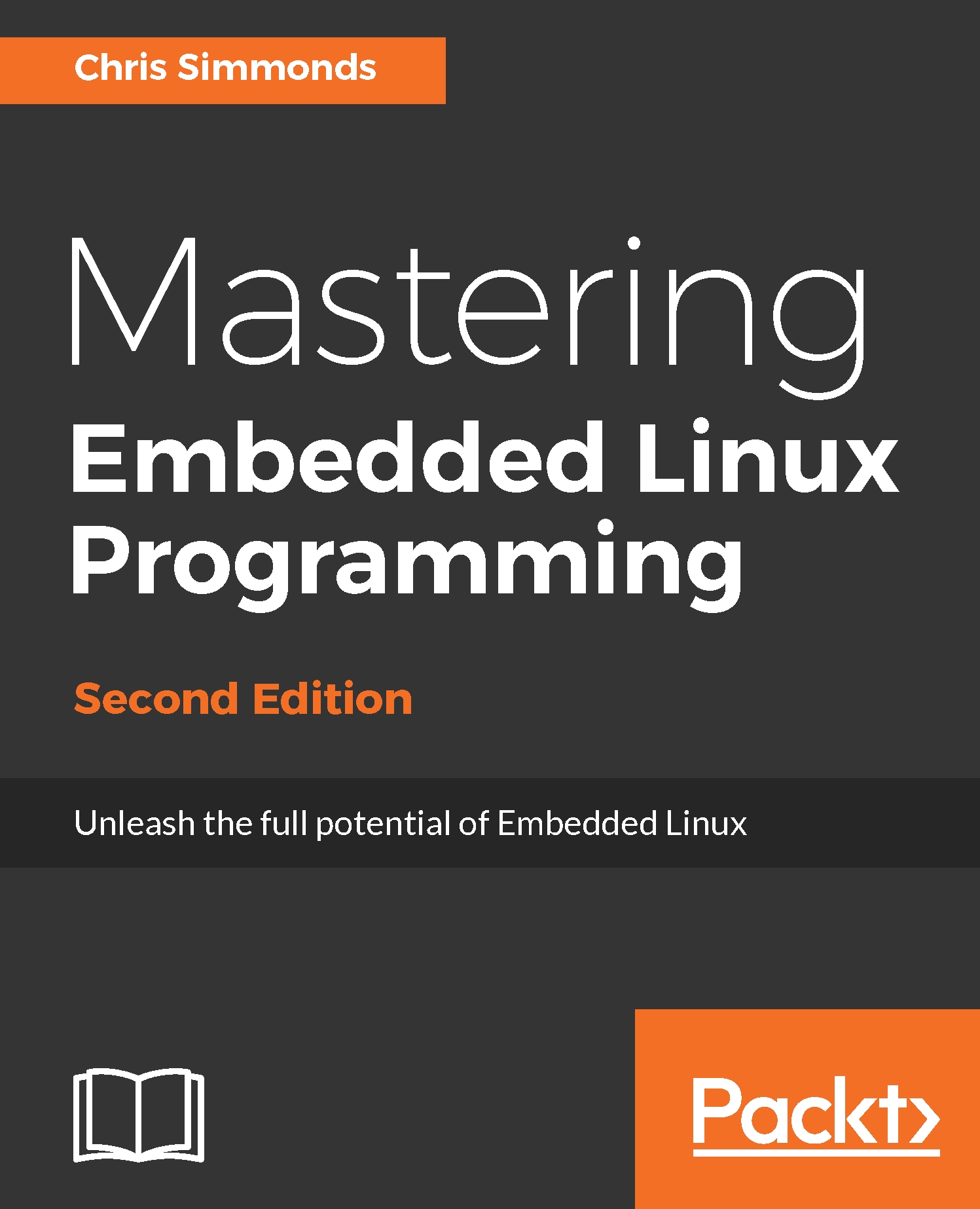You can use kgdb for source-level debugging, in a manner similar to remote debugging with gdbserver. There is also a self-hosted kernel debugger, kdb, that is handy for lighter-weight tasks such as seeing whether an instruction is executed and getting the backtrace to find out how it got there. Finally, there are kernel Oops messages and panics, which tell you a lot about the cause of a kernel exception.
-
Book Overview & Buying

-
Table Of Contents

Mastering Embedded Linux Programming - Second Edition
By :

Mastering Embedded Linux Programming
By:
Overview of this book
Embedded Linux runs many of the devices we use every day, from smart TVs to WiFi routers, test equipment to industrial controllers - all of them have Linux at their heart. Linux is a core technology in the implementation of the inter-connected world of the Internet of Things.
You will begin by learning about the fundamental elements that underpin all embedded Linux projects: the toolchain, the bootloader, the kernel, and the root filesystem. You’ll see how to create each of these elements from scratch, and how to automate the process using Buildroot and the Yocto Project.
Moving on, you’ll find out how to implement an effective storage strategy for flash memory chips, and how to install updates to the device remotely once it is deployed. You’ll also get to know the key aspects of writing code for embedded Linux, such as how to access hardware from applications, the implications of writing multi-threaded code, and techniques to manage memory in an efficient way. The final chapters show you how to debug your code, both in applications and in the Linux kernel, and how to profile the system so that you can look out for performance bottlenecks.
By the end of the book, you will have a complete overview of the steps required to create a successful embedded Linux system.
Table of Contents (17 chapters)
Preface
 Free Chapter
Free Chapter
Starting Out
Learning About Toolchains
All About Bootloaders
Configuring and Building the Kernel
Building a Root Filesystem
Selecting a Build System
Creating a Storage Strategy
Updating Software in the Field
Interfacing with Device Drivers
Starting Up – The init Program
Managing Power
Learning About Processes and Threads
Managing Memory
Debugging with GDB
Profiling and Tracing
Real-Time Programming
